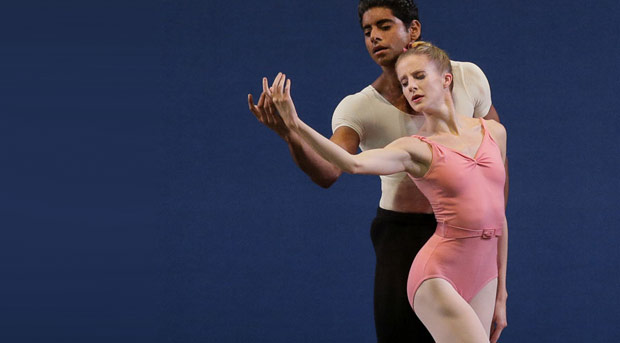
© Paul Kolnik. (Click image for larger version)
New York City Ballet at Les Etés de la Danse festival
Balanchine in Black and White: Apollo, The Four Temperaments, Duo Concertant, Symphony in Three Movements
★★★★✰
Paris, Théâtre du Châtelet
29 June 2016
www.nycballet.com
chatelet-theatre.com
www.lesetesdeladanse.com
The 12th summer festival of dance in Paris brings New York City Ballet to the city for the first time in eight years. (They were last seen in London in 2008, after a 25 year gap.) Programmes over three weeks feature mainly Balanchine ballets, with a triple bill of works by Christopher Wheeldon, Alexei Ratmansky and Justin Peck (7,11,15,16 July).
The opening programme, ‘Balanchine in black and white’, spans works from his Diaghilev era Apollo (1928) up to 1972, the year of NYCB’s Stravinsky Festival. Both Apollo and The Four Temperaments (1946) originally had sets and elaborate costumes, later simplified to white or black practice dress. Apollo even lost the vestiges of a set in NYCB’s repertoire, though the Royal Ballet version preserves the stark staircase at the back, along with the scene of Apollo’s birth.

© Paul Kolnik. (Click image for larger version)
Coincidentally, Robert Fairchild, the Apollo I saw on 29 June, performed at the Châtelet Théâtre last year, singing and dancing in Wheeldon’s account of An American in Paris in the leading role opposite Leanne Cope. He returned to NYCB as a principal dancer in March after launching the musical on Broadway, abandoning jeans for white tights. (He is due to open the London season of An American in Paris with Cope next year at the Dominion Theatre.)
He’s a physically mature Apollo (at 24), sprung fully-formed as a demi-god, though bewildered about how he should handle his lute and the three Muses who offer to tutor him. His leaps are wild, seemingly clumsy, as he learns to control his strength; he obviously enjoys swinging two of the Muses (Sara Mearns and Teresa Reichlen) from his powerful biceps. Maria Kowrowski as Terprischore, with her demure expression and sensual, long-limbed body sends him into paroxysms after their instructive duet. (There was a risky moment as she balanced on his shoulders for the ‘swimming lesson’).
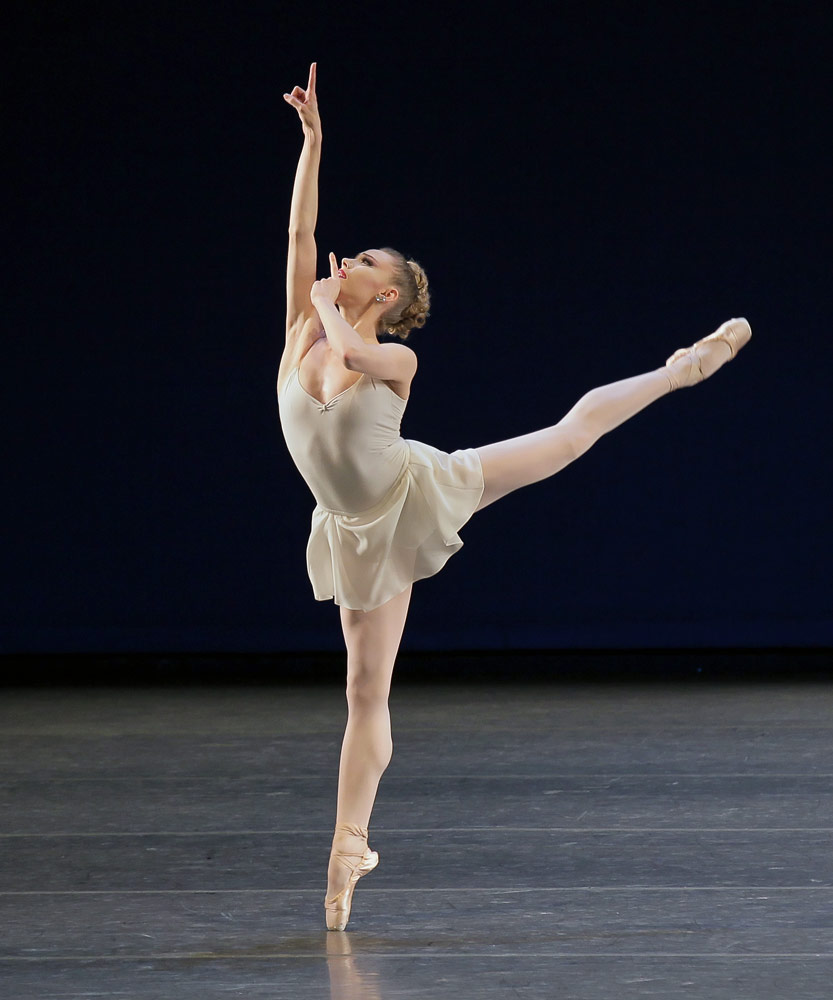
© Paul Kolnik. (Click image for larger version)
He makes clear his response when the call comes in the music for him to assume Apollo’s destiny as the sun god. He is now in charge of the troika of Muses, claiming his birthright as a divine being, a classical dancer. All three Muses were admirable in the clarity and precision of their dancing, never putting a foot wrong.
The Four Temperaments begins with a primer in how ballet steps and partnerships are forged, via three quirky pas de deux in the opening Theme. Then each of the four ‘temperaments’ take centre stage in variations that experiment with off-kilter positions, challenged by determined cohorts of women. The men – Gonzalo Garcia in Melancholic and Ask La Cour in Phlegmatic – were less impressive than Royal Ballet dancers have been in the same roles: the women, however – Abi Stafford in Sanguinic and Savannah Lowery in Choleric – were feisty and ferocious. They take bold risks, jutting their hips and pushing themselves beyond any bounds of security. In the last movement, the corps resemble jets taking off in all directions from a frantically busy airport. Conducted by NYCB’s Clotilde Otranto, the French Orchestre Prométhée musicians were evidently enjoying playing Hindemith’s score.
The French solo violinist for Apollo and The Four Temperaments, Anne-Claire Gorenstein, was replaced on stage for Stravinsky’s Duo Concertant by NYCB’s own Concert Master, Arturo Delmoni, with Cameron Grant at the piano. Delmoni is a small, tubby man with long grey hair – a contrasting figure to the two young dancers, Lauren Lovette and Chase Finlay, recent principals. Finlay, tall and golden as one of the company’s Apollos, can move with astonishing speed and accuracy in Duo Concertant’s solos, airily unhurried. Lovette, petite and lively, responds to the music with infectious joy. They dance as equals until the corny, spotlit coda with its false ending that confuses the audience.
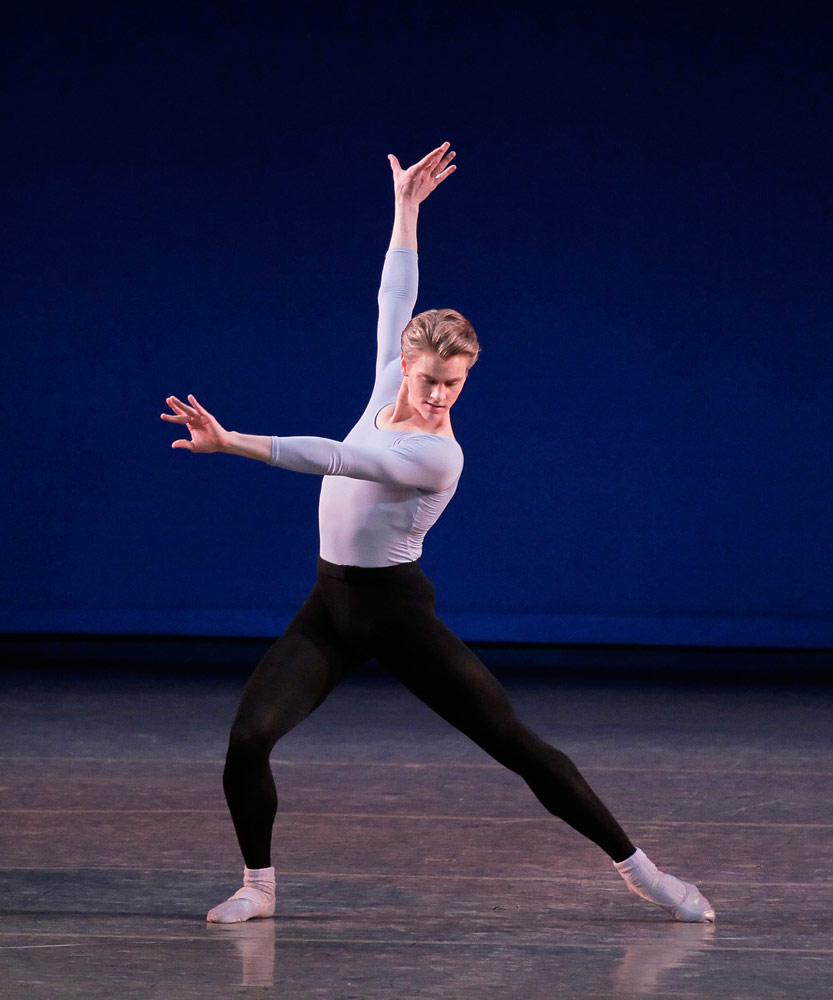
© Paul Kolnik. (Click image for larger version)
Also created for the Stravinsky Festival in 1972, Symphony in Three Movements makes an exhilarating finale with 32 dancers deployed on stage. A long diagonal of 16 women in white leotards start by swinging their pony tails and flailing their arms (like Apollo with his lute) before lunging forwards, scarier than Wilis. When they repeat the line-up later, they curve and dissolve in canon, as if they were benign – for the moment. They are one tribe, the black leotards and their male partners another, interlocking armies negotiating a truce.
Mediating between them are three women in pink leotards: Sterling Hyltin, Megan LeCrone and Erica Pereira. Glamorous Hylton resembles an Esther Williams bathing belle serenely at home in this threatening atmosphere. She dances the central pas de deux with Amar Ramasar to dreamy andante music for harp and piano. The duet resembles the oriental courtship in Balanchine’s later Bugaku (1963) in the exotic shapes the dancers make with wrists and elbows, legs bent. Though he clasps her tightly, the erotic charge is unacknowledged and the couple split coolly at the conclusion without regret.

© Paul Kolnik. (Click image for larger version)
Before the audience can applaud, the two tribes leap in for complex manoeuvres that look like electronic circuitry in action. The black and white ensemble pace relentlessly in a steady rhythm, swinging their arms, while the soloists leap and plunge into arabesques on different rhythms in front of them. The final frieze is as arresting as the opening diagonal: the women frozen, arms outstretched like scaffolding, the men crouching as if to pounce as the final chords resound in what was described as a ‘hellishly glorious noise’.
This stunning black-and white programme demonstrated how very different these Balanchine-technique-trained dancers are from the Bolshoi dancers about to appear in London this summer. In these ballets, the Americans don’t use hyper-extended, semi-acrobatic positions, don’t have markedly sway-back legs or exceptionally pliant backs. Their torsos are strong, securely placed so that they can retrieve off-balance piqués and lunges. Not many multiple, multiple pirouettes – they have to move too fast for such virtuosity. Arms are stretched instead curved, fingers splayed: all four ballets in this programme require flexed wrists (and feet) and angular elbows. The effect is both modern and dated to a particular period of NYCB’s evolution. The pleasure, above all, in watching this company is their fearless super-charge of energy and their commitment as the inheritors of Balanchine’s ballets.












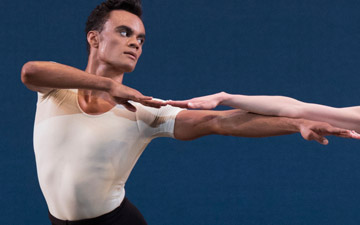
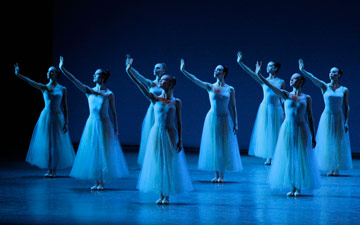
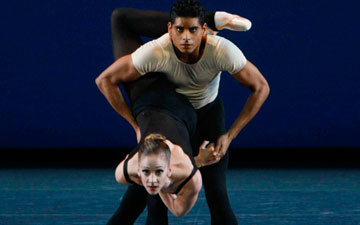

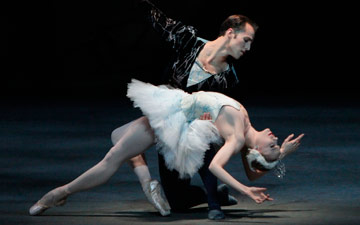
Wonderfully perceptive review.